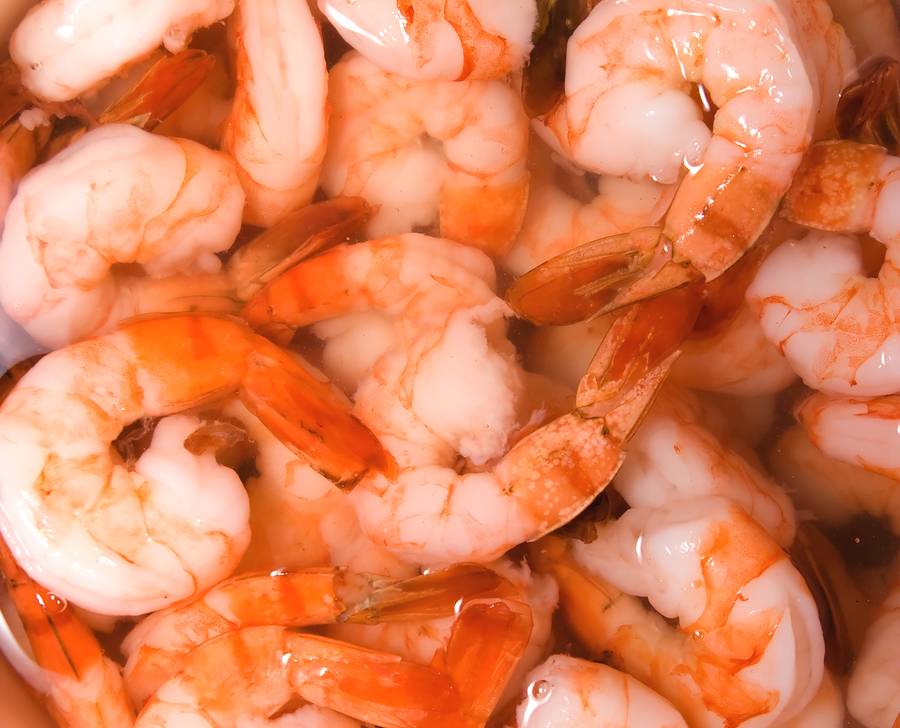Yesterday, I wrote about two of the biggest ecological challenges we face, both caused directly by agricultural practices, and both driven by the U.S. appetite for cheap food. Factory farming and its effect on oceans was the focus of yesterday’s blog post. Today, I will examine a vital collection of forests that are literally losing ground to the raising of one small (in size) but significant (in sales) crop: shrimp. In South America and Southeast Asia, mangrove forests once lined the coasts. Mangroves are amazing trees. These salt-tolerant plants grow directly in the ocean, sinking a thicket of aerial roots into inter-tidal areas. The roots trap sediments and protect the shoreline from the battering waves of tropical storms. They provide food and shelter for a whole biome’s worth of creatures: fish, mollusks, crustaceans, birds, mammals and reptiles. Likewise, the life forms that grow in mangrove forests provide sustenance and income for people living nearby.  No, this shrimp is not local. It’s puzzling, then, to learn that mangrove forests are vanishing at a rapid clip. Why on earth would anyone chop down such a useful forest? The huge U.S. appetite for shrimp is a factor. Mangroves grow in prime locations for shrimp ponds — aquaculture’s equivalent of slash-and-burn. Farmers raze mangroves to make way for saline shrimp ponds they’ll use for a few seasons before moving on. It’s ironic that in the quest to make a living, shrimp farmers also produce an environment bereft of material support for the people or animals left behind. The denuded coastline is vulnerable to erosion from hurricanes. The storms are fueled by rising ocean temperatures, which are caused by increasing carbon in the atmosphere. The great irony is that mangrove forests themselves are an unusually effective carbon sequester, trapping more carbon than any other kind of biosphere. So stripping them away in the first place released carbon to wreak atmospheric havoc exacerbated by their absence. People in mangrove country aren’t taking this lying down. In Brazil and Bangladesh, they are working to stop the destruction of mangrove forests and replant in decimated areas. But as long as there is a market for farmed shrimp, the economic pressure to clear the forests will still be there. What can we do to help? Primarily, we could reevaluate the impact of buying something from another hemisphere. I do believe in a global marketplace, and I don’t advocate a boycott of tropical products. But not that many years ago, for example, an orange was considered a nice Christmas present, not a year-round staple. And shrimp was a rare treat; not the most popular seafood in America, as it is now. What if, by more thoughtful consumption of the world’s resources, we could make supply and demand meet at a sustainable level? Would you eat less shrimp if you believed it would make an difference? And if those shrimp then got harder to find and more expensive to buy, would you consider it progress? I would, and I think you would, too. As I wrote yesterday, all the ecological issues we face today are the result of market forces, and markets are made of individuals who create supply and demand—one person at a time. If enough people act in concert, then it’s a trend. Maybe a movement. You’ve got the power. Use it.
No, this shrimp is not local. It’s puzzling, then, to learn that mangrove forests are vanishing at a rapid clip. Why on earth would anyone chop down such a useful forest? The huge U.S. appetite for shrimp is a factor. Mangroves grow in prime locations for shrimp ponds — aquaculture’s equivalent of slash-and-burn. Farmers raze mangroves to make way for saline shrimp ponds they’ll use for a few seasons before moving on. It’s ironic that in the quest to make a living, shrimp farmers also produce an environment bereft of material support for the people or animals left behind. The denuded coastline is vulnerable to erosion from hurricanes. The storms are fueled by rising ocean temperatures, which are caused by increasing carbon in the atmosphere. The great irony is that mangrove forests themselves are an unusually effective carbon sequester, trapping more carbon than any other kind of biosphere. So stripping them away in the first place released carbon to wreak atmospheric havoc exacerbated by their absence. People in mangrove country aren’t taking this lying down. In Brazil and Bangladesh, they are working to stop the destruction of mangrove forests and replant in decimated areas. But as long as there is a market for farmed shrimp, the economic pressure to clear the forests will still be there. What can we do to help? Primarily, we could reevaluate the impact of buying something from another hemisphere. I do believe in a global marketplace, and I don’t advocate a boycott of tropical products. But not that many years ago, for example, an orange was considered a nice Christmas present, not a year-round staple. And shrimp was a rare treat; not the most popular seafood in America, as it is now. What if, by more thoughtful consumption of the world’s resources, we could make supply and demand meet at a sustainable level? Would you eat less shrimp if you believed it would make an difference? And if those shrimp then got harder to find and more expensive to buy, would you consider it progress? I would, and I think you would, too. As I wrote yesterday, all the ecological issues we face today are the result of market forces, and markets are made of individuals who create supply and demand—one person at a time. If enough people act in concert, then it’s a trend. Maybe a movement. You’ve got the power. Use it.
Amy Boland is a Twin Cities writer and food enthusiast. Her last article for Simple, Good and Tasty was How Our Food Choices Affect the Weather. You can read more of her food musings on her blog Cook 'Em if You Got 'Em.



